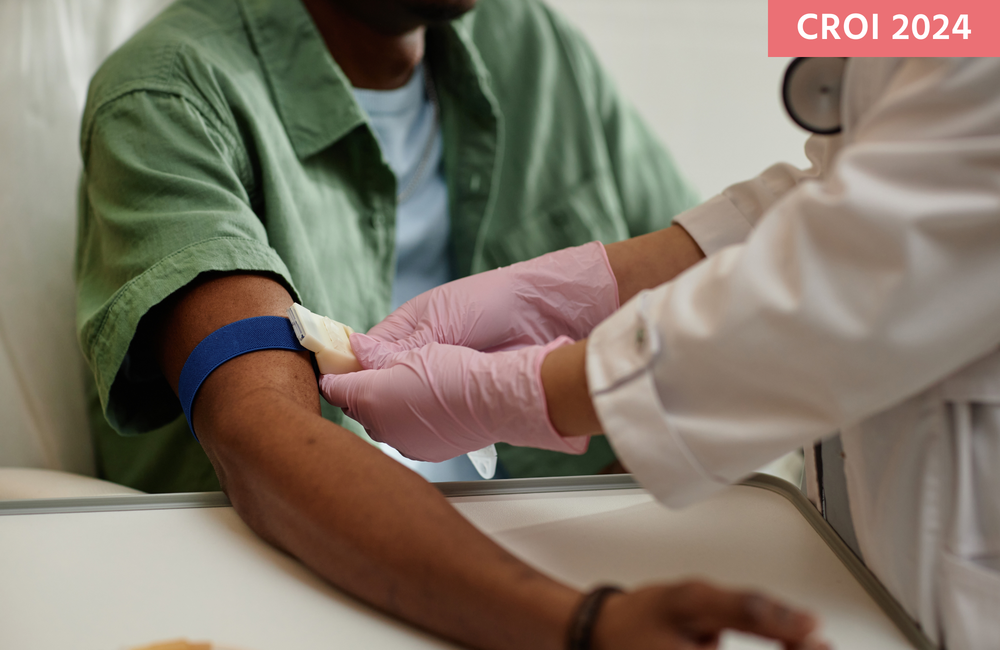
Men with HIV in the US’s largest care provider for people with HIV were more likely to be diagnosed late with prostate cancer and less likely to undergo testing that may warn of an increased prostate cancer risk, the Conference on Retroviruses and Opportunistic Infections (CROI 2024) in Denver heard this week.
Prostate cancer is the most common cancer among US military veterans living with HIV and is projected to be the most frequently diagnosed cancer among people with HIV by 2030. African American men are more likely to be diagnosed and die from prostate cancer. But unlike several cancers caused by infections, HIV and immunosupression do not increase the risk of prostate cancer.
However, there is little information on the characteristics of cancers, the stage at which prostate cancer is diagnosed in men with HIV, or the outcomes of treatment.
Professor Keith Sigel of Icahn School of Medicine at Mount Sinai Hospital, New York, reported on a study of prostate cancer diagnoses and outcomes in the Veterans Aging Cohort Study. The Veterans Affairs healthcare system is the largest provider of HIV care in the United States. In this analysis, researchers matched men with HIV diagnosed with prostate cancer between 2001 and 2018 with at least two men without HIV who had been diagnosed with prostate cancer during the same period.
Using medical records and cancer registries, they compared cancer stage at diagnosis, survival after diagnosis and testing for prostate-specific antigen (PSA) prior to diagnosis in men with and without HIV. Participants were matched by demographic characteristics.
The study identified 751 men with HIV diagnosed with prostate cancer and matched them with 2778 men without HIV also diagnosed with prostate cancer. Men with HIV had a median age of 62 years, 225 were non-Hispanic White and 67% were non-Hispanic Black. Men without HIV were significantly more likely to have been diagnosed in the period 2001-2007 (25% of all men without HIV diagnosed in this period compared to 19% of people with HIV, p<0.001).
Men with HIV had significantly higher PSA levels at diagnosis (6.8 vs 6.3, p=0.005) and a significantly higher proportion had metastatic cancer at diagnosis (indicating late diagnosis) (4.3% vs 2.8%, p=0.048). However, there was no significant difference in the stage at which tumours were diagnosed when the Gleason score for each tumour was analysed (low-risk, intermediate or high-risk).
Looking only at localised tumours, the researchers also looked at the risk of recurrence using the D’Amico score. This scoring system predicts the risk of recurrence within five years by combining the clinical stage, the Gleason score on a biopsy sample, and the preoperative PSA level. People with HIV were significantly more likely to have tumours with intermediate or high D’Amico scores (p=0.02), although the difference was less than 5% in each scoring category.
Did a lack of PSA testing in people with HIV explain diagnosis at a later stage? PSA testing is an imprecise tool for predicting prostate cancer risk; in the United Kingdom it is not carried out routinely for this reason. The US Preventive Services Taskforce says that it only offers a small potential benefit for men aged 55-69 and doesn’t recommend its use in the over-70s.
Although PSA testing increased over time, testing was consistently less frequent in people with HIV across all time periods and age groups, so that men with HIV were 1.25 times less likely to undergo PSA testing prior to prostate cancer diagnosis (p<0.001). The gap was especially pronounced in the oldest patients: in those diagnosed between 2015 and 2018, men without HIV aged 75 and over had received an average of 19 PSA tests by the time they were diagnosed compared with 13 for men with HIV.
People with HIV were more likely to die after diagnosis if they had intermediate- or high-risk tumours, but when the cause of death was restricted to prostate cancer alone, there was no significant difference in the risk of death at any cancer stage.
Sigel K et al. Prostate cancer characteristics and outcomes for veterans with HIV in the antiretroviral era. Conference on Retroviruses and Opportunistic Infections, Denver, abstract 154, 2024.
